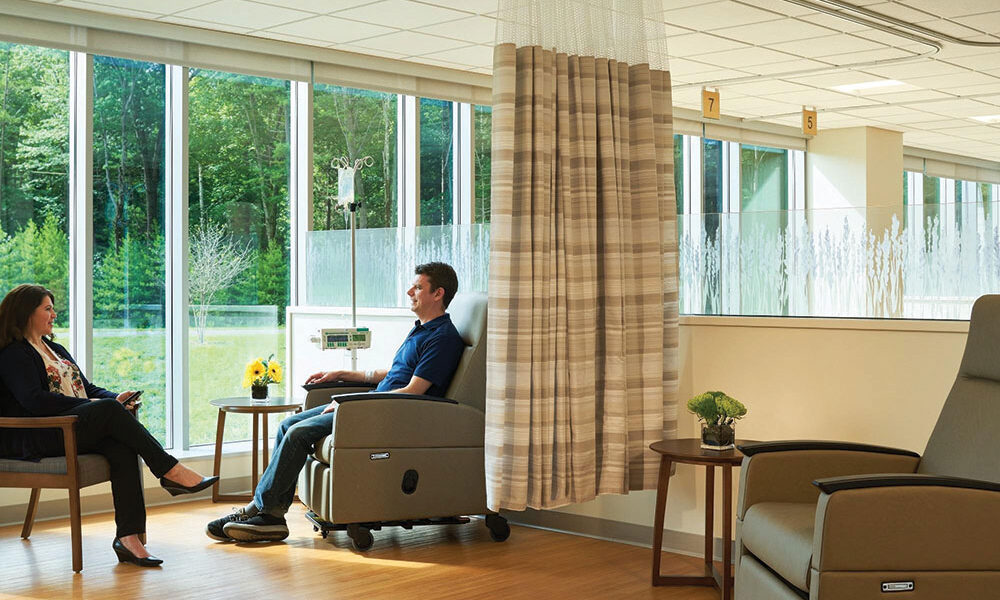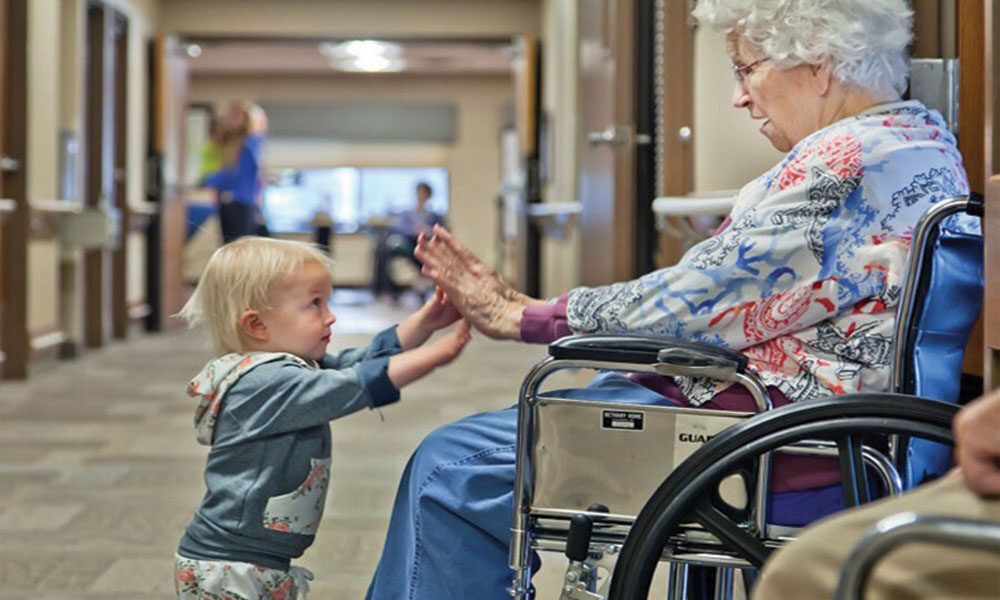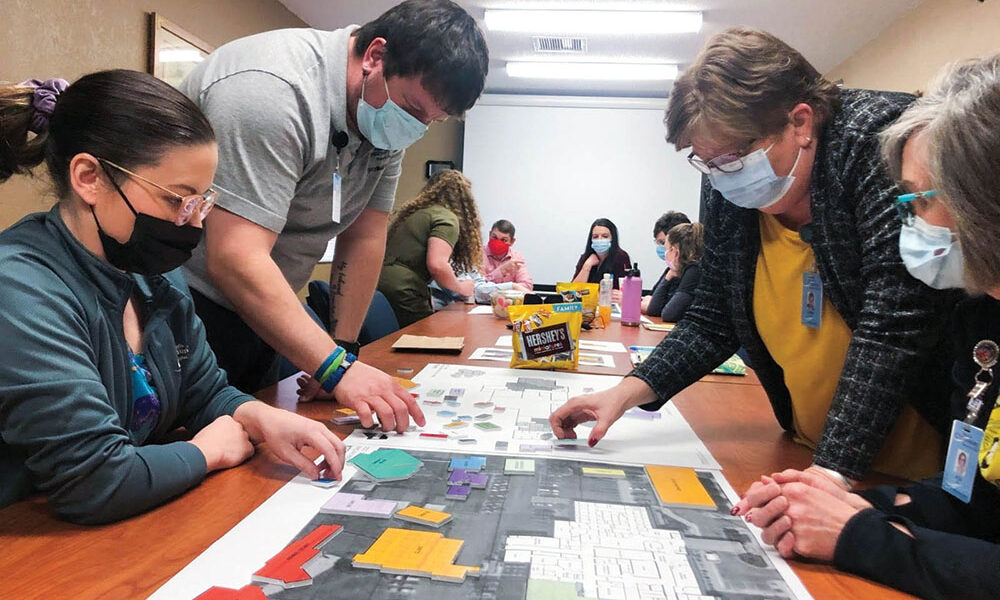Designing for the Ages: Trends in population health design
By Rachel L. H. Bartling & Tu-Anh Bui Johnson
The design of healthcare centers are continually evolving to match the needs of communities. These designs must adequately address the vast range of experiences that a diverse population represents, including generational diversity. Facilities designed with all community members in mind allow for a community-centric approach to healthcare.
When analyzing what works best for multigenerational care, it is vital to understand the broad age range for stakeholders. Each generation brings a unique set of needs and preferences when it comes to the way they receive care. A design for all ages must enhance and uplift those differences, rather than eliminate them.
Understanding how to bridge those needs is a conversation continuing to grow in prevalence. Several key aspects will help to create an optimized and efficient design, forming the holistic future of multigenerational care.
The following trends are emerging in the world of multigenerational care. Trends include integration of whole health, technology enhancements and holistic community engagement.
Trend #1: Integration of whole health
One overarching theme is the growth in patient-centric delivery models, otherwise known as whole health. Moving away from what was previously providing “sick care,” whole health is described as care that supports a patient’s overall health and well-being.
Emphasizing the value of community, a whole health center considers all aspects of one’s health, including physical, mental, emotional, spiritual and environmental needs. A more personalized process, whole health delivers care specific to each individual’s unique health goals. Similar to a community center, a whole health care environment becomes an avenue for a multitude of preventive resources for all generations located in one building.
Patch Adams, who established the Gesundheit! Institute, is one example of an innovative leader involved in implementing the whole health model of care. The Gesundheit! Institute is an example of an area where individuals can not only come for preventive and healing care, but also holistic care. Although all aspects of the Gesundheit! Institute are unlikely to take shape in how healthcare is structured today, we believe its mission of “reframing and reclaiming the concept of hospital” must be considered as we strive for healthier and happier communities.
Trend #2: Technology enhancements
Another continually evolving trend in healthcare is the integration of technology. One specific technology driving the largest change in care delivery is telehealth services. In a study completed by McKinsey & Company, “Telehealth utilization has stabilized at levels 38X higher than before the pandemic.”
This growth is largely due to COVID safety protocols and reimbursements being allowed to be equal to that of an in-person visit when, prior to the pandemic, it was a mere fraction of the amount. Due to the various perks of telehealth visits, we foresee a continual growth in its utilization if reimbursements remain similar to those created during the pandemic.
A few perks of the telehealth system include reducing clinical square footage, serving more patients and creating a more private delivery of care. As technology continues to advance, we must implement these advancements to better the overall patient experience. However, it is vital to recognize that all generations may have different preferences of how their care is provided, as well as their technical capabilities. Some additional technologies growing in prevalence include phone apps and kiosks for registration, robotic surgeries and remote monitoring empowering more care in the home environment.
Trend #3: Holistic community engagement
When planning and designing healthcare facilities for all generations, it is imperative to identify, invite and listen to the voices of community stakeholders to create inclusive designs. By connecting all participants within the process, outcomes are more likely to better respond to the community’s needs.
The patients and their families, the care team staff and organizational leadership, have collective ownership of the process and its results. Below is a list of priorities that organizations should implement during an optimized stakeholder engagement planning process:
- Understand the uniqueness of an organization and community
- Clearly define the planning process and set the schedule early
- Gather all data needed to make inclusive decisions
- Determine the appropriate way to connect with each group of stakeholders
- Clearly define the needs of all stakeholders and ensure they are considered during planning
The solutions presented above are continually evolving topics in the industry. Although solutions are rapidly changing, it is vital to have a significant understanding of these changes to adapt for the future.
Author: Rachel L. H. Bartling & Tu-Anh Bui Johnson
Rachel L. H. Bartling, AIA, LEED AP, is a healthcare principal at Wold Architects and Engineers. Tu-Anh Bui Johnson, Associate AIA, NOMA, LEED AP, BD+C, is a healthcare associate at Wold Architects and Engineers.
Posted December 15, 2021
More Articles:
- Coverings 2024
Apr 22, 2024 – Apr 25, 2024 - Hospital, Outpatient Facilities & Medical Office Buildings Summit
Apr 25, 2024 – Apr 25, 2024 - CxA Workshop & Exam
Apr 29, 2024 – Apr 30, 2024 - EMP Seminar & Exam at CxEnergy 2024
Apr 29, 2024 – Apr 30, 2024 - CxEnergy
Apr 29, 2024 – May 2, 2024 - PHCC West 2024
Apr 29, 2024 – May 2, 2024 - Lean in Design Forum 2024
May 1, 2024 – May 2, 2024













